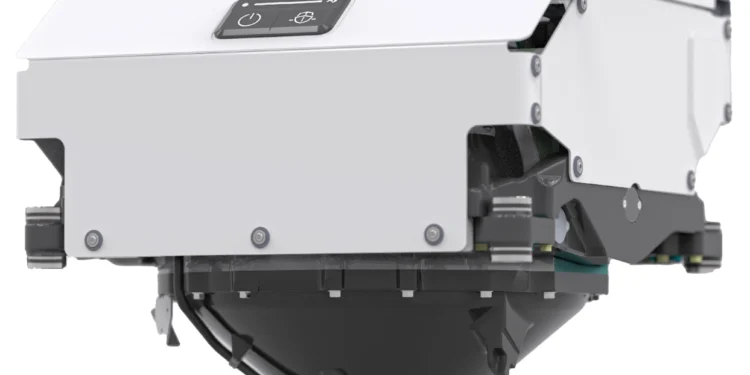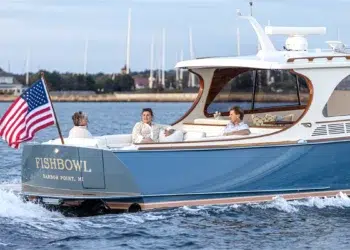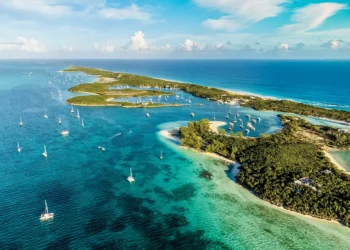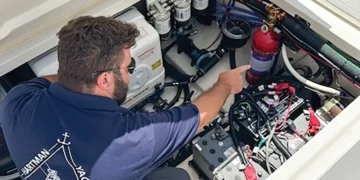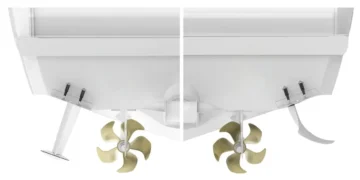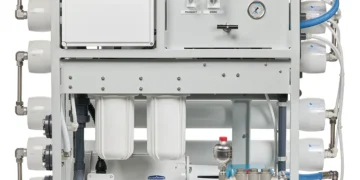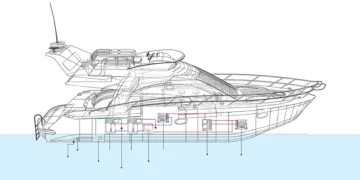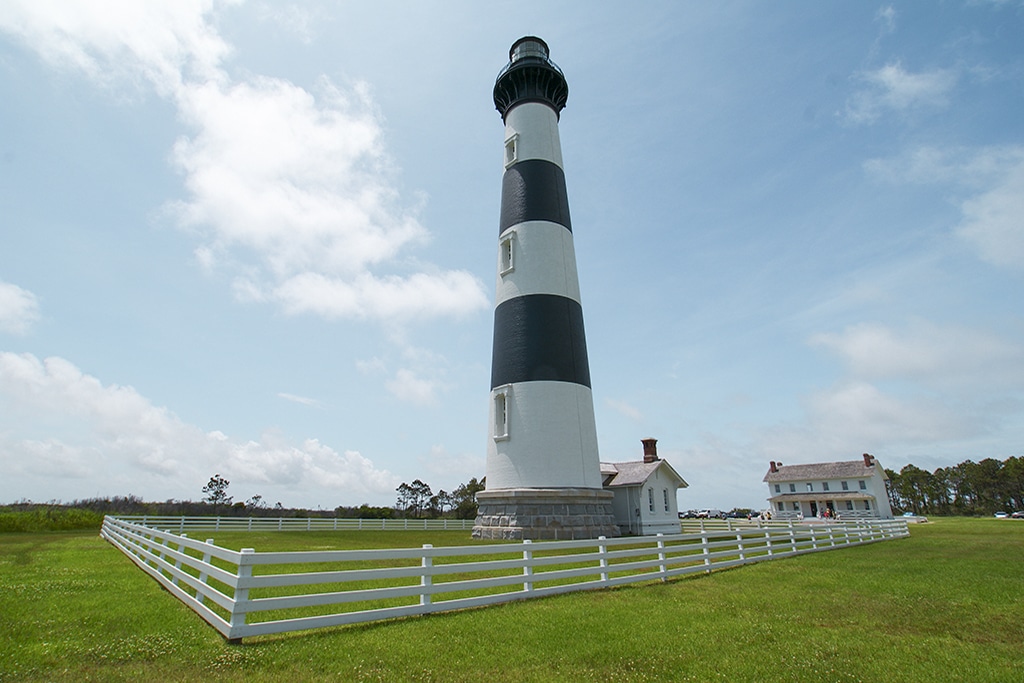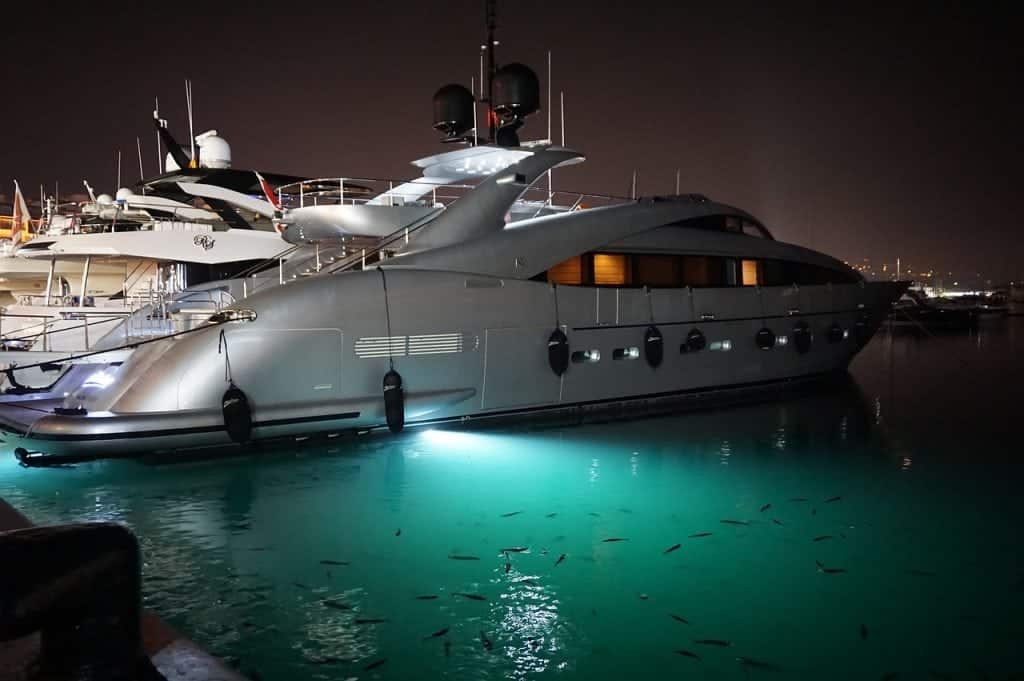Dometic’s new DG3 gyrostabilizer makes its debut.
When Dometic announced its new DG3 gyrostabilizer at the Miami International Boat Show this past February, Steve Watson, product manager for Dometic’s marine stabilization unit, pointed out that the DG3 is no ordinary stabilizer. The “build a better mousetrap” metaphor seems to be working as there is continued interest in the new product.
“This is not just another stabilizer. It’s not a knockoff,” says Watson while demonstrating the stabilizer’s abilities out on the water during the show. “This is what we like to call a better mousetrap. We address the things in the market that the customer needs.”
We all know that a marine stabilizer enhances a boat’s stability by reducing the rock and roll motion and improves the comfort level for passengers. So how is this one better? Dometic’s DG3 is designed to replace traditional hydraulic systems with an electric unit that not only reduces energy but captures it and cuts spin-up and spin-down time.
Also Read
Hinckley’s Picnic Boat 39 Review: Quiet Speed, Big Views
Imagine a beautiful day. Visualize a traditional wicker basket filled with tasty delicacies, a cooler with refreshments on ice, and...
Spin Up/Down Time
“It takes sixteen-and-a-half minutes to reach full operating rpm, and nine-and-a-half minutes until it’s ready to enable stabilization,” says Watson, reducing spin-up time by more than 65 percent compared to the typical 50 minutes required by current similar systems. Just as impressive, the DG3 ramps down in 16 minutes improving on the hours-long times to do so in other systems. Not only is there an advantage by shortening the wait time before heading out, but the system also minimizes energy consumption.
The DG3 uses a dedicated 48-volt battery to spin up and spin down. Dometic has engineered the stabilizer so that as it spins down, “instead of having all that wasted energy in the flywheel and letting it do a natural spin down when you power off the unit, what we do is we use the electric motor as a regenerative frame and we recharge the forty-eight-volt battery,” says Watson. “We intentionally hold that battery at a lower state of charge, so we have a place to put the energy back in.”
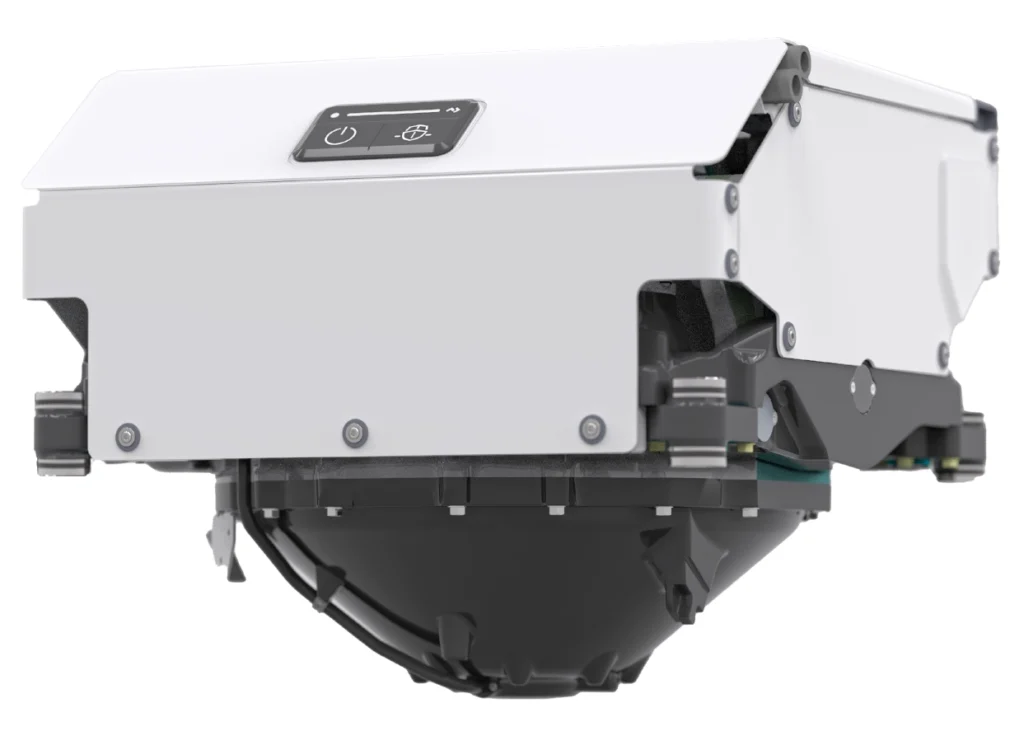
Energy-efficient
Dometic’s gyrostabilizer solution introduces innovations in energy storage and recapture which enable the battery to recharge efficiently. It also incorporates Dometic’s proprietary, industry-proven Inverted Roller Screw technology (as seen in the Dometic Optimus steering system) for true dynamic control and significantly improved roll reduction.
Subscribe Here For More Boating Content
The unit also features a larger, slower-spinning flywheel. “We reduced power consumption by putting in a larger diameter flywheel,” says Watson. “The mass is further out. It allows us to operate in half the rpm of competitive products while providing the same stabilization forces.” The rpm to enable stabilization is 2,720 and will reach a full rpm at 4,700.
In addition, the DG3 is constructed with more robust bearings, patent-pending inner race cooling, parallel path cooling, and a titanium heat exchanger to stay cool and operate reliably. Overall, the DG3 reduces power consumption by an impressive 40 percent compared to competing solutions.
Fully Electric
Unlike other systems with hydraulic technology, the DG3’s Roller Screw system provides actively controlled flywheel procession and its proprietary all-electric procession actuator replaces hydraulic actuators that require fluid and are prone to troublesome leaks.
“There are no hydraulics on this unit. It’s all electric,” says Watson. “We actually drive the gyro. We don’t react to the waves. We have an IMU (inertial measurement unit) that measures the wave state, the sea state, and we can actually move the gyro. We can actually rock a boat left to right, left to right, with a little script in our software. And what that does is allows us to characterize a hull and really helps us figure out what’s going on for the future.”
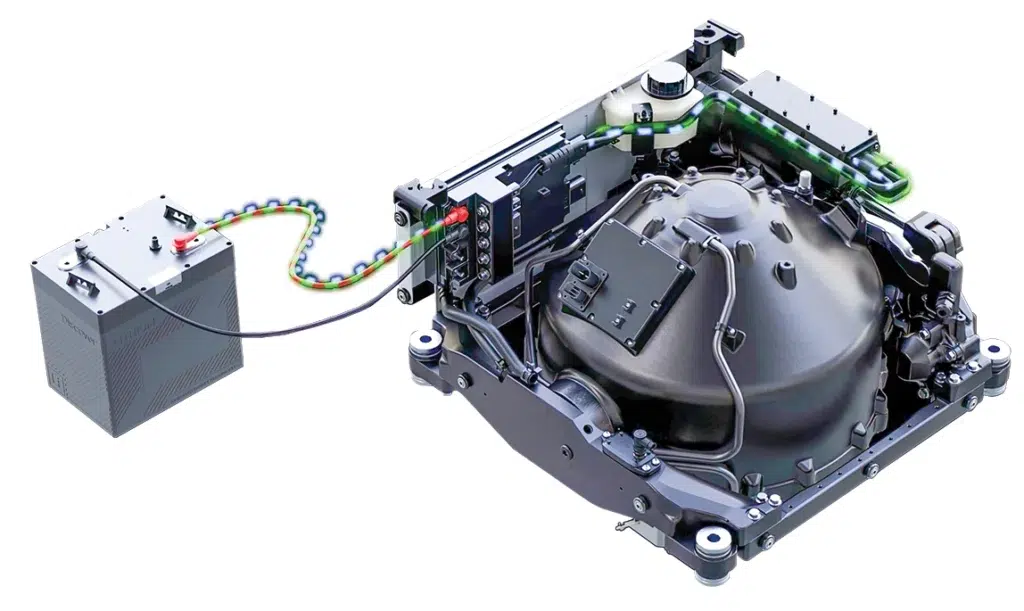
That electric actuator recaptures some of the energy when the boat gets into a moderate heavy sea state. “It’s the first truly active gyro, meaning that we can drive the hemisphere, not just control the dampening portion,” says Watson. “During dampening, we use that electric actuator to recapture energy, and then we consume it, so we use less energy overall.”
Also Read:
Increased Cruising Permit Fees – Bahamas’ New Rules Take Effect July 1
Updated July 31, 2025. If the Bahamas is on your cruising itinerary, pay attention: Starting July 1, 2025,...
The DG3 is designed so the boat owner only needs to turn the stabilizer on. The operation is done behind the scenes through its sensors and software. The unit decides when the boat needs to be stabilized. During a turn, for example, “The onboard sensors monitor pitch, roll, and yaw. Yaw and roll are the most important ones here, because we want to eliminate roll,” says Watson. “But during yaw, which is steering input of the boat, what we’ll do is we’ll allow that hemisphere to slowly precess to the hard stop, and then we’ll hold it at the hard stop. So the boat’s going to roll like you would expect it to lean into a turn…that’s the biggest thing, it doesn’t interfere with the steering.”
Dometic’s DG3 introduces cutting-edge rapid stabilization technology with 40 percent lower power consumption, seamless digital connectivity, compatibility with 12- to 48-volt DC inputs, and intuitive user interface designed specifically for 35- to 41-foot boats. The system not only enhances long-term durability, minimizes required service, and reduces total cost of ownership, but also is an easy drop-in replacement for other comparably sized systems currently available. Dometic transforms the way boats stay steady amid waves and wakes to deliver a smooth, safe, and seasick-free ride. dometic.com
-by Stephen Spurling


